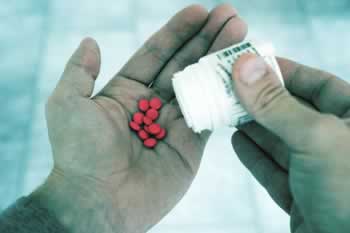Pharmacists find themselves caught in a precarious position, sandwiched between the escalating costs of prescription drugs and the increasing demands of patients seeking affordable medications. This article delves into the intricate web of drug pricing, exploring the role of pharmacists and the challenges they face in navigating the tumultuous landscape of pharmaceutical economics.
The Rising Tide of Prescription Drug Costs
The United States has long grappled with the issue of soaring prescription drug prices. In 2019, prescription drug spending in the country reached a staggering $370 billion, according to the Centers for Medicare & Medicaid Services[1]. This astronomical figure reflects a trend that has been steadily climbing for years, with no signs of abating.
The Stark Reality of U.S. Drug Prices
To put things into perspective, a recent RAND report revealed that prescription drug prices in the United States are, on average, 2.78 times higher than those in 33 other nations[3]. This disparity becomes even more pronounced when we look at brand-name drugs, where U.S. prices soar to an average of 4.22 times those in comparison countries.
“These findings provide further evidence that manufacturers’ gross prices for prescription drugs are higher in the United States than in comparison countries,” said Andrew Mulcahy, lead author of the study and a senior health economist at RAND[3].
The Impact on Patients and Healthcare Systems
The ramifications of these high prices are far-reaching. Patients, especially those who are uninsured or underinsured, bear the brunt of these costs. Many are forced to make difficult choices between their health and their financial stability. The healthcare system as a whole also feels the strain, with increased costs trickling down to taxpayers and businesses alike.
The Pharmacist’s Dilemma: Caught in the Crossfire
Amidst this pricing maelstrom, pharmacists find themselves in a unique and challenging position. They are often the first point of contact for patients grappling with the high costs of their medications, yet they have little to no control over the prices themselves.
The Evolving Role of Pharmacists
In recent years, pharmacists have taken on an increasingly important role in helping patients navigate the complex world of drug pricing. According to a Forbes article, more than two-thirds of pharmacists reported taking on new job responsibilities during the pandemic, including helping patients find ways to save money on prescriptions[1].
Dr. Annesha White, associate dean for assessment and associate professor at the University of North Texas Health Science Center College of Pharmacy, emphasizes this shift: “Pharmacists play a critical role in helping patients navigate drug pricing. We are at the forefront of healthcare, especially community pharmacists.”[1]
The Balancing Act: Patient Advocacy vs. Business Realities
Pharmacists often find themselves walking a tightrope between advocating for their patients and managing the financial realities of running a pharmacy. They must balance the need to provide affordable medications with the necessity of maintaining a viable business in an increasingly competitive market.
The Complex Web of Drug Pricing
To understand the challenges pharmacists face, it’s crucial to delve into the intricate world of drug pricing. The process involves multiple players, each with their own interests and influences on the final price tag.
Manufacturers: Setting the Stage
Drug manufacturers are at the beginning of the pricing chain. They set the initial list prices for their products based on various factors, including research and development costs, market competition, and profit margins. However, these list prices are rarely the final prices paid by patients or insurers.
Pharmacy Benefit Managers: The Middlemen
Pharmacy Benefit Managers (PBMs) play a significant role in the drug pricing ecosystem. These companies negotiate prices between drug manufacturers and insurance companies, often securing rebates and discounts. However, their role has come under scrutiny in recent years.
“Experts debate the role of pharmacy benefit managers in rising U.S. drug prices. Some evidence shows that pharmacy benefit managers place upward pressure on prices, but other evidence suggests that prices would be even higher without them.”[2]
Insurance Companies: Shaping Access and Costs
Insurance companies also play a crucial role in determining what patients ultimately pay for their medications. Through formularies, copayments, and deductibles, they influence both the accessibility and affordability of prescription drugs.
The Pharmacist’s Toolbox: Strategies for Navigating Drug Prices
Despite their limited control over drug prices, pharmacists have developed various strategies to help patients manage their medication costs.
Generic Alternatives and Therapeutic Substitutions
One of the most effective tools in a pharmacist’s arsenal is the ability to recommend generic alternatives or therapeutic substitutions. Generic drugs are typically much less expensive than their brand-name counterparts. In fact, the RAND study found that prices for unbranded generic drugs in the U.S. are about 67% of the average cost in comparison nations[3].
Patient Assistance Programs and Discount Cards
Pharmacists often help patients navigate various assistance programs and discount cards that can significantly reduce out-of-pocket costs. These can include manufacturer-sponsored programs, non-profit organizations, and state-specific initiatives.
Medication Therapy Management
Through medication therapy management services, pharmacists can review a patient’s entire medication regimen. This process can identify opportunities for cost savings, such as discontinuing unnecessary medications or finding more cost-effective alternatives.
The Policy Landscape: Attempts to Address Drug Pricing
As the issue of high drug prices continues to dominate healthcare discussions, policymakers at both the state and federal levels have proposed various solutions.
State-Level Initiatives
Many states have taken matters into their own hands, implementing laws aimed at increasing price transparency and regulating PBMs. For example, in 2023, Minnesota’s Commerce Department imposed a $500,000 fine on CVS Caremark for allegedly using strategies not allowed under state law to steer consumers to its own pharmacies[5].
Federal Efforts
At the federal level, there have been numerous proposals to address drug pricing. These range from allowing Medicare to negotiate drug prices directly with manufacturers to implementing international reference pricing.
The Role of the Federal Trade Commission
The Federal Trade Commission (FTC) has also entered the fray, launching an investigation into PBMs in 2022. Their interim report, released in 2024, was critical of PBMs, stating that they have inflated drug costs while squeezing independent pharmacies[5].
The Impact on Independent Pharmacies
Independent pharmacies have been particularly hard hit by the current drug pricing system. Many struggle to compete with large chain pharmacies and mail-order services, which often have more negotiating power with PBMs and manufacturers.
Challenges Faced by Independent Pharmacies
Independent pharmacies often face lower reimbursement rates from PBMs, making it difficult to maintain profitability. They may also be excluded from certain pharmacy networks, limiting their ability to serve patients.
The Value of Independent Pharmacies
Despite these challenges, independent pharmacies play a crucial role in many communities, especially in rural areas. They often provide personalized care and services that larger chains may not offer.
The Future of Pharmacy in the Drug Pricing Debate
As the debate over drug pricing continues, pharmacists are likely to play an increasingly important role. Their unique position at the intersection of healthcare and commerce makes them valuable contributors to policy discussions and potential solutions.
Expanding Pharmacist Roles
Many experts advocate for expanding the role of pharmacists in healthcare delivery. This could include giving pharmacists more authority to modify prescriptions, provide clinical services, and even prescribe certain medications.
Technology and Transparency
Advancements in technology could provide pharmacists with better tools to navigate drug pricing. Real-time benefit checks and price transparency tools could help pharmacists and patients make more informed decisions about medication options.
The Global Perspective: How Other Countries Handle Drug Pricing
The United States is unique among developed nations in its approach to drug pricing. Many other countries have implemented systems that result in significantly lower drug prices.
Government Negotiation and Price Controls
In many European countries, governments negotiate directly with drug manufacturers to set prices. Some countries also use reference pricing, where they set the price of a drug based on its cost in other countries.
Value-Based Pricing
Some nations have adopted value-based pricing models, where the price of a drug is tied to its effectiveness and the value it provides to patients and the healthcare system.
The Ethical Dimensions of Drug Pricing
The issue of drug pricing raises significant ethical questions, particularly regarding the balance between innovation incentives and access to life-saving medications.
The Innovation Argument
Pharmaceutical companies often argue that high prices are necessary to fund research and development for new drugs. However, critics point out that much of the basic research for new drugs is funded by taxpayers through government grants.
Access and Equity
On the other hand, high drug prices can create significant barriers to access, particularly for vulnerable populations. This raises questions about health equity and the right to healthcare.
The Patient Perspective: Navigating a Complex System
For patients, the drug pricing system can be bewildering and frustrating. Many struggle to understand why their medications cost so much and what options they have for managing these costs.
The Impact of High Drug Prices on Patient Care
High drug prices can lead to medication non-adherence, where patients skip doses or fail to fill prescriptions due to cost. This can have serious health consequences and ultimately lead to higher healthcare costs overall.
Patient Advocacy and Education
Patient advocacy groups play a crucial role in educating patients about their rights and options when it comes to medication costs. They also lobby for policy changes to make drugs more affordable and accessible.
The Role of Pharmacists in Patient Education
Pharmacists are uniquely positioned to educate patients about their medications, including costs and potential alternatives. This educational role is becoming increasingly important as drug prices continue to rise.
Counseling on Cost-Saving Strategies
Pharmacists can provide valuable advice on how to save money on prescriptions, from using generic alternatives to applying for patient assistance programs.
Promoting Health Literacy
By helping patients understand their medications and the factors that influence their costs, pharmacists can empower patients to make more informed decisions about their healthcare.
The Economic Impact of High Drug Prices
The high cost of prescription drugs has far-reaching economic consequences, affecting not just individual patients but the entire healthcare system and economy.
Healthcare Spending and National Budgets
Prescription drug spending accounts for a significant portion of overall healthcare spending in the U.S. This puts pressure on government budgets, private insurers, and ultimately, taxpayers and consumers.
Impact on Businesses and Employment
Rising healthcare costs, driven in part by high drug prices, can affect businesses’ ability to provide comprehensive health benefits to their employees. This can influence employment decisions and overall economic growth.
The Pharmaceutical Industry’s Perspective
While often criticized for high drug prices, pharmaceutical companies argue that their pricing strategies are necessary to fund innovation and bring new treatments to market.
The Cost of Drug Development
Developing a new drug is a lengthy and expensive process, often taking over a decade and costing billions of dollars. Pharmaceutical companies argue that high prices are necessary to recoup these costs and incentivize future research.
The Role of Patents and Market Exclusivity
Patents and market exclusivity periods allow pharmaceutical companies to maintain high prices for a certain period before generic competition enters the market. This system is designed to balance innovation incentives with eventual price competition.
The Future of Drug Pricing: Potential Solutions and Innovations
As the debate over drug pricing continues, various stakeholders are proposing potential solutions to make medications more affordable while still incentivizing innovation.
Value-Based Pricing Models
Some experts advocate for adopting value-based pricing models in the U.S., where drug prices would be tied to their effectiveness and the value they provide to patients and the healthcare system.
Increased Competition and Generic Drug Availability
Policies that promote competition in the pharmaceutical market, such as expediting the approval process for generic drugs, could help drive down prices.
Transparency Initiatives
Increased transparency in drug pricing could help identify areas where costs could be reduced and potentially lead to more competitive pricing.
Key Takeaways
- Pharmacists play a crucial role in helping patients navigate the complex world of drug pricing, despite having little control over the prices themselves.
- The U.S. has significantly higher drug prices compared to other developed nations, with prescription drug prices averaging 2.78 times those in 33 other countries.
- The drug pricing system involves multiple players, including manufacturers, pharmacy benefit managers, and insurance companies, each influencing the final cost to patients.
- Independent pharmacies face particular challenges in the current system but provide valuable personalized care, especially in rural areas.
- Various policy solutions have been proposed at both state and federal levels to address high drug prices, including increased regulation of PBMs and allowing Medicare to negotiate drug prices.
- Pharmacists are increasingly taking on expanded roles in healthcare delivery and patient education about medication costs and alternatives.
- The debate over drug pricing involves complex ethical considerations, balancing the need for innovation with ensuring access to life-saving medications.
- The high cost of prescription drugs has significant economic impacts, affecting healthcare spending, national budgets, and businesses.
- Future solutions to the drug pricing issue may include value-based pricing models, increased competition, and greater transparency in the pricing process.
- Despite the challenges, pharmacists remain a vital resource for patients seeking to manage their medication costs and navigate the complex healthcare system.
FAQs
- Q: Why are drug prices so much higher in the United States compared to other countries?
A: Drug prices in the U.S. are higher due to a combination of factors, including lack of government price controls, the complex role of pharmacy benefit managers, patent protections, and the high cost of drug development and marketing in the U.S. market. - Q: How can pharmacists help patients save money on their prescriptions?
A: Pharmacists can help patients save money by recommending generic alternatives, assisting with patient assistance programs, providing information about discount cards, and offering medication therapy management to identify potential cost-saving opportunities. - Q: What are pharmacy benefit managers (PBMs) and how do they affect drug prices?
A: PBMs are companies that manage prescription drug benefits for health insurers. They negotiate prices with drug manufacturers and pharmacies, but their role has been controversial, with some arguing that they contribute to higher drug prices while others claim they help control costs. - Q: How does the high cost of prescription drugs affect the overall healthcare system?
A: High drug costs contribute to increased healthcare spending, putting pressure on government budgets, private insurers, and consumers. This can lead to higher insurance premiums, increased out-of-pocket costs for patients, and strain on public health programs. - Q: What potential solutions are being considered to address high drug prices in the U.S.?
A: Potential solutions include allowing Medicare to negotiate drug prices, implementing value-based pricing models, increasing competition through faster generic drug approvals, enhancing price transparency, and adopting some pricing control measures used in other countries.
Sources cited:
- https://www.aacp.org/article/price-iscomplicated
- https://www.theregreview.org/2023/11/14/turner-intermediaries-in-the-drug-price
























